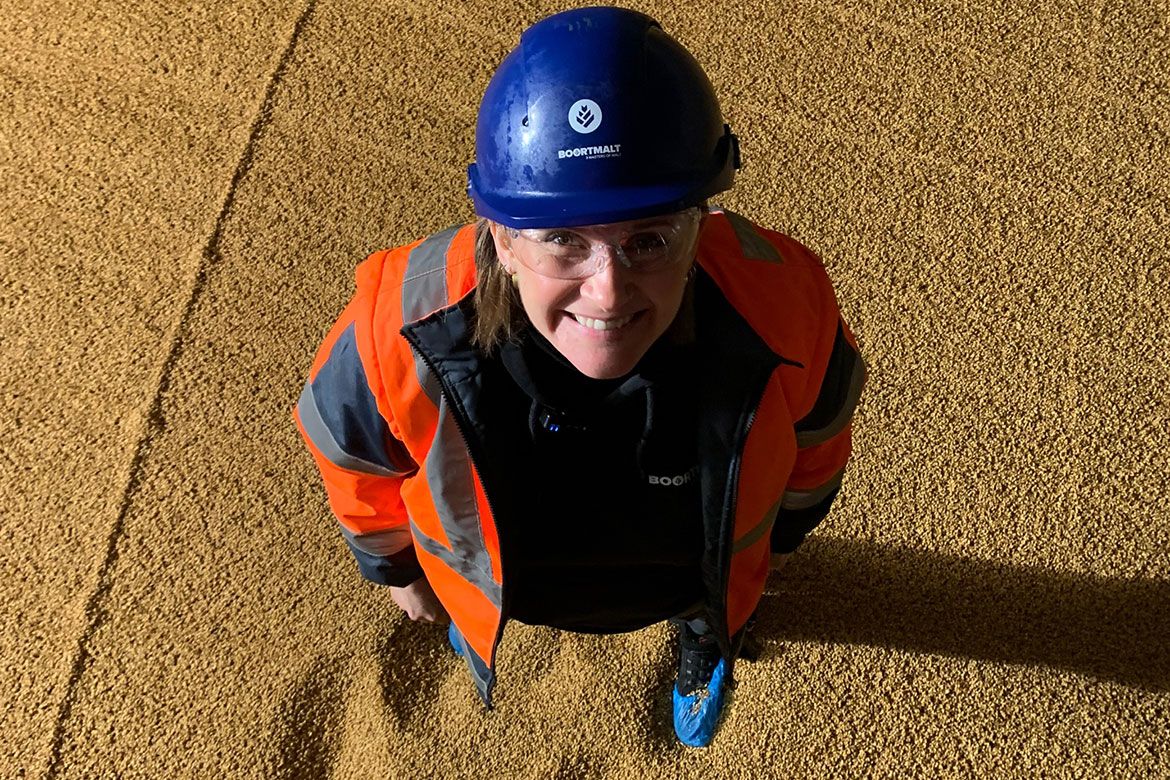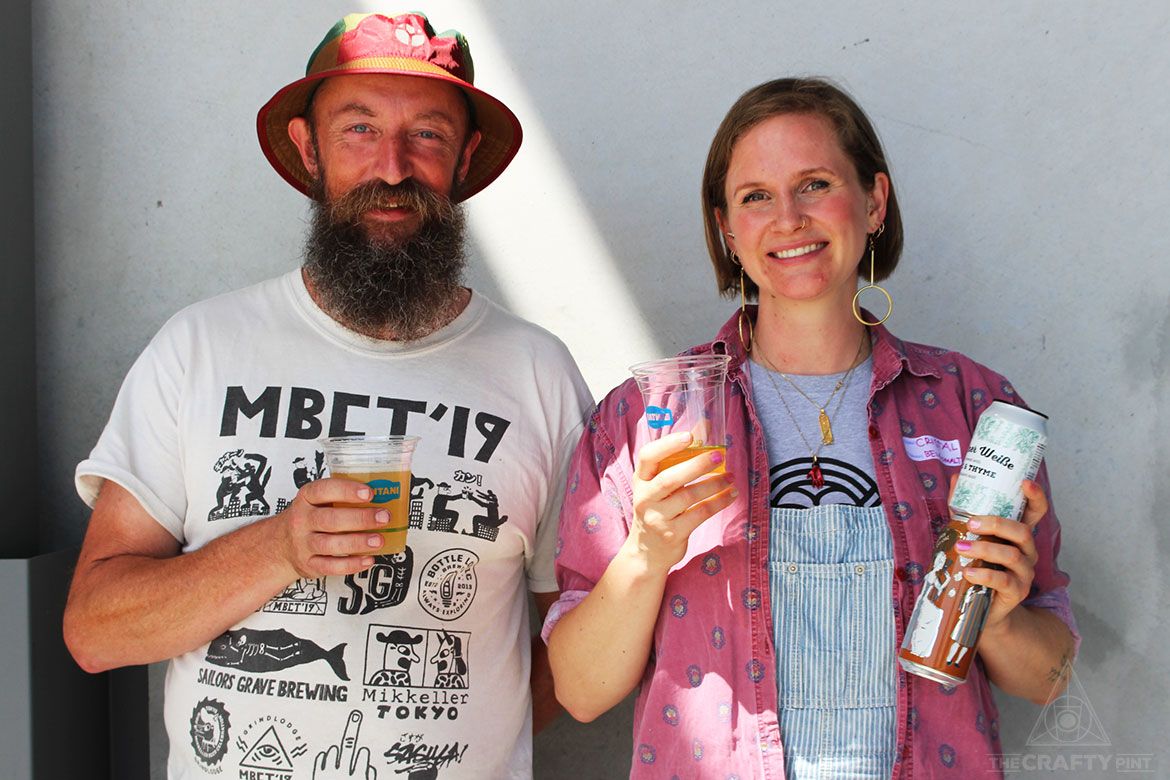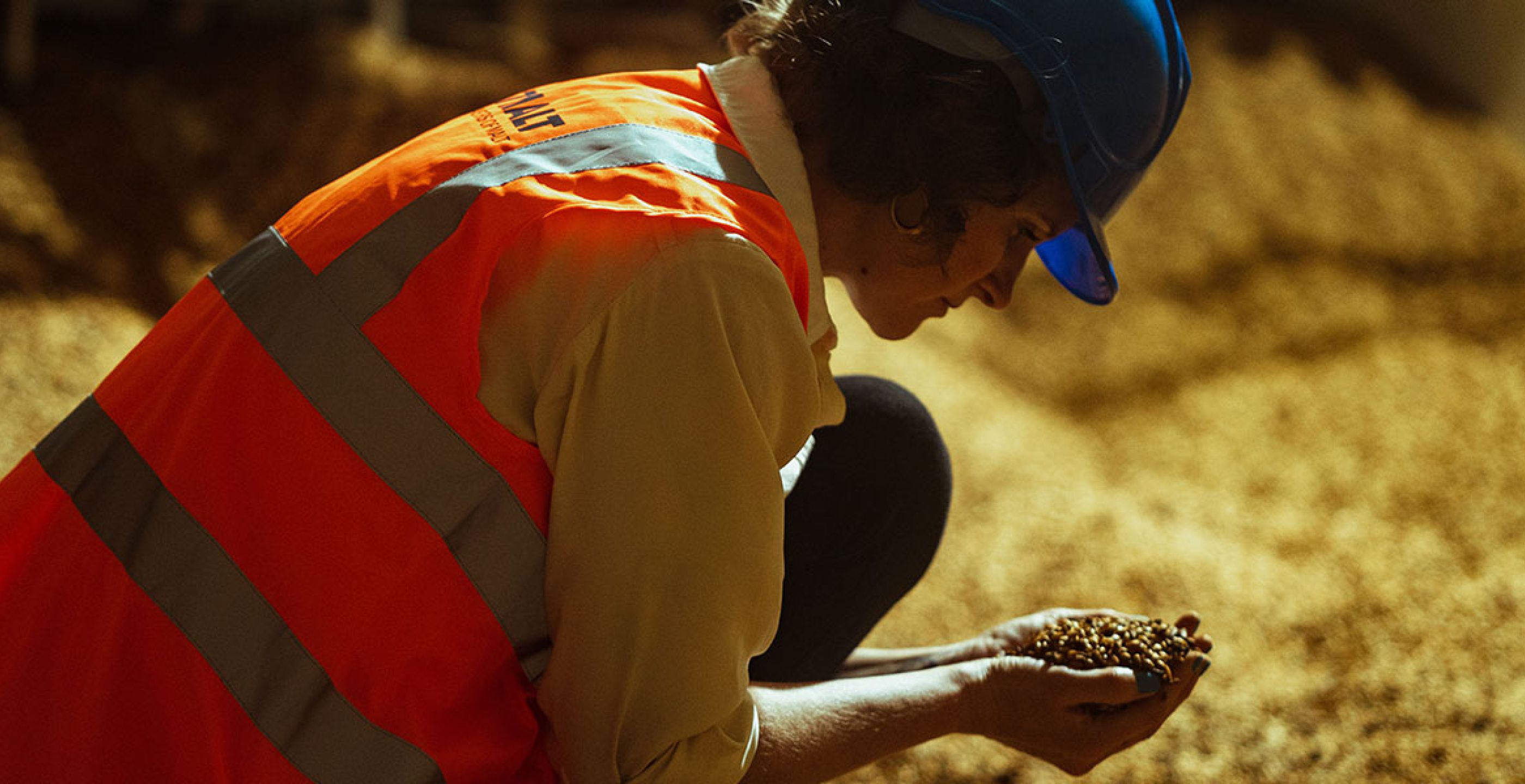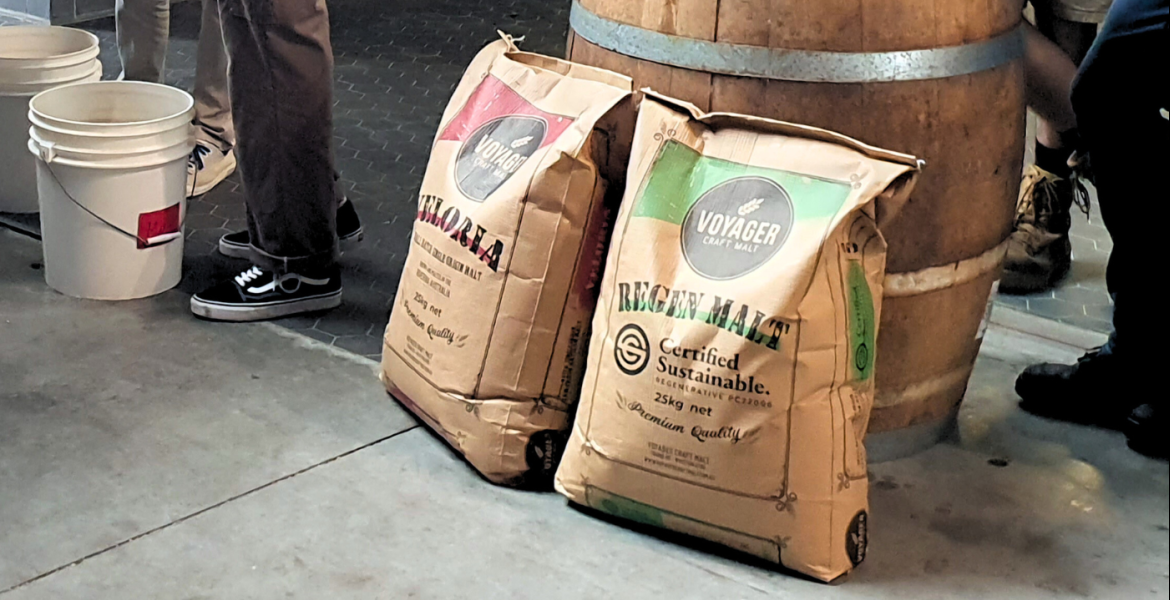You may well know that beer consists of four simple ingredients: water, malt, hops and yeast. Equally, you could peruse the beers in your local indie bottleshop fridge and come to the conclusion that this was, in fact, a bare-faced lie.
Craft brewers, in particular, love to add all kinds of adjuncts to beer: chocolate, coffee, spices, herbs, fruit, lactose, the remnants of wine and spirits barrels, maybe even something from a local bakery featuring most of those ingredients. It's not an entirely new practice, either. In the world's most admired and fascinating beer culture, that of Belgium, brewers have long looked outside beer's core four building blocks.
And it's there that a recent innovation in the world of malting looks set to add a new tool to the kits of brewers worldwide. It's one that sees flowers, spices, fruit and other ingredients added to malt well before a brew takes place; instead they are infused into grains as raw barley is transformed into brewer-ready malt.
Behind this development is an Australian who has featured on these pages before, Cristal Peck. When we last interviewed Cristal, she was brewing at Berliner Berg while also running her own brewing company, Parasite Produktions.
After working as head brewer for Berliner Berg, she considered moving back to Australia in 2019 but, when a recruiter reached out about a position as a brewmaster and malt specialist, she ended up flying to Antwerp to visit the Boortmalt Innovation Center.
“I was very much enjoying Berliner Berg but I'd kind of grown out of the brewery,” Cristal says.
“I flew to Belgium, saw the Innovation Center and I was blown away. I also did a tour of the production facility – it’s one of the biggest germination boxes in the world. So, all of a sudden, I was more excited than you could imagine – and I was very determined.”
Beyond the determination, Cristal’s professional background goes beyond brewing to include biology, something she says impressed the team at Boortmalt, the world’s largest malt company. It's capable of producing around three million tonnes of malt in a year and owns Australia’s Joe White, North America’s Prairie Malt and Belgomalt.

Cristal says the innovation centre – which occupies two sites – allows them to tweak any part of the malting process and make beer in their own brewhouse.
“The innovation centre is designed to be completely flexible,” she says. “You can basically go from any point of the process to any final product. It allows you to adjust every variable you could ever imagine.
“But not only barley; we trial all cereals, so we've malted lentils, chickpeas... anything.”
The innovation centre’s larger site can make up to a tonne of malt per batch but they also have the ability to run far smaller test batches. The micro malting system allows them to work closely with grain farmers when testing new varieties to see how they’d work in beer, distilling or malt extract.
“In the micro malting, you can do 100 grams to one kilogram,” Cristal says, "which is useful to barley breeders who don’t have the seed numbers; they need to grow it up and that takes years and years.”
Her work with local farmers and Belgomalt has seen them working with regenerative barley designed to suit the Belgian climate, where the local brewing industry largely relies on imports.
“We're working together with the local farmers in Belgium to bring brewing barley back,” she says. “We get a lot of our barley from France.”
However, it’s a project Cristal has been steering since she arrived in Antwerp that really puts the innovation in innovation centre: Belgomalt’s infusion malt. The idea of adding the likes of orange peel, lavender or thyme to the malting process came to Cristal within her first month in the role.
As a brewer driven by creativity, she always favoured brewing without boundaries and felt the world of malting was ready for change.
“I was starting to get a bit bored by the innovation in malting,” Cristal says of her time brewing.
“Everyone gets fixated on yeast strains or hops, but I always take a lot of time building my recipes and malt is the stage you set your recipe with.”
She began incorporating unique ingredients into the barley during the malting process – without really telling anyone what she was up to.
“It was a bit secretive at the beginning,” she admits. “I didn’t want to ask permission or discuss it with my manager because I thought it would amount to nothing.
“I just kept it to myself and started trying more and more things. I was probably working on it for nine months before I even showed anyone the results.”

Cristal says the initial batches brought some immediately interesting results, although certain ingredients worked better than others.
“Flowers and spices were the early ones,” she says. “I was using roses and hibiscus and the hibiscus one was beautiful but it made the malt pink. Which is cool but pink malt isn’t really a good thing. Generally, it means there’s a fungus infection; I’m not sure that would float with all the quality managers of the world.”
Over time, Cristal says she found adding at least two ingredients together tended to work really well, as with Belgomalt’s Sage & Thyme malt.
“Usually, there’s a strong contender and, with the other one, it just works in harmony,” she explains. “So, I feel like when you have two different ingredients, the result is always much more pronounced.”
But she adds there are no solid rules; this is an innovation centre after all.
“The Gingerbread Cookie is six ingredients, which is a bit radical," she says. "But that was my first production batch and I wanted to do something a bit more radical.”
Orange peel, nutmeg and sage can all be added by the brewer during the brewing process, of course, so what’s the point of the maltster building such ingredients in beforehand? According to Cristal, the stage at which you add any beer ingredient fundamentally changes the final beer; what's more, it's not as if the beer industry doesn't already brew to such principles.
“Why would you add hops in 60 minutes versus into the whirlpool or dry hop with hops? It's the same ingredient but the result is totally different," she says.
“You can't really compare it; the result is different. If you add sage or thyme into the whirlpool, the beer will be a certain way, but if you add it into the malting process and then brew with that malt the result is going to be different.”
She’s still studying exactly what biochemical changes are occurring during the malting process but the result in beers to date has been to create a more nuanced end product.
“There are these layers, I always say one plus one equals three with infusion malt,” Cristal says.
“What I found is that it's much more complex and it’s much more integrated into this matrix. And there are other aromas and flavours that seem to be present beyond what was added.”

When Cristal finally let the rest of Belgomalt know what she was up to, one of her managers immediately saw the implications of what she had been working away on in secret and gave her a deadline to turn her batches into a bonafide product. The first of those came out late in 2020, while Cristal has worked closely with Brussels Beer Project to get brewer feedback, as the craft brewery is just as interested in boundary-pushing.
“My mates in Brussels Beer Project were really helpful because they were the first commercial brewery to use it and they were thrilled, they do a lot of creative things,” she says.
Although some Belgian breweries have embraced infusion malt – and Cristal has even developed custom recipes for locals – it was in America that infusion malt really impressed. The response at the most recent Craft Brewers Conference, held in Minneapolis last year, was overwhelmingly positive and has seen the production of her malts scaled up to Boortmalt's smallest system outside the innovation centre, one which produces 70 tonnes at a time.
“It absolutely took off there and the crowd loved it,” Cristal says. “It was so validating for me.”
Locally, Sailors Grave were the first to get their hands on the malt, using the Gingerbread Cookie to make "imperial pastry field beer" Let Them Eat Cake. But while the response in America and the limited Australian exposure to date has been positive, there's one beer market that has taken her by surprise: Bavaria.
Last year, Cristal took the malt to Munich's major beverage conference, Drinktec, and wasn't particularly confident she'd find much support in the home of the Reinheitsgebot. Yet brewers there reacted positively too.
“Infusion malt is interesting; I view it as a very clever sidestep of the German Purity Law. It's the same principles as smoked or sour malt: you're still using malted barley."
Beer as water, hops, yeast and malt? Maybe it's not such a bare-faced lie, after all.
If you're a brewer interested in getting your hands on Infusion Malt then watch this space, Bintani have plans to bring it over.
Or if you're a local brewer heading to the Craft Brewers Conference in May, then you can attend Cristal's presentation of her research. Details are here.
















